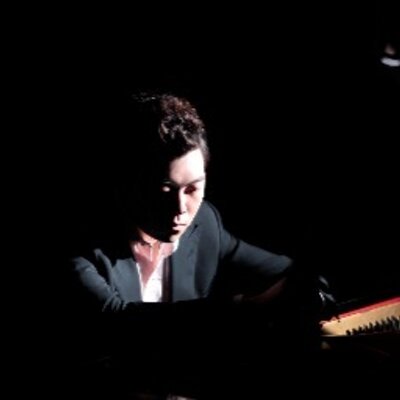VIOLIN SONATAS
Daniel de Borah & Friends
Melbourne Recital Centre
October 27, 2015
Part of the Recital Centre’s Local Heroes all-embracing chain of recitals, pianist de Borah’s initiative acts as a sort of complement to Kathryn Selby’s long-lived series where musical colleagues join in ensembles either on an ad hoc basis or in an ongoing relationship. Selby’s environment is usually that of the piano trio or quartet while de Borah gravitates to the duo format – his friends including another pianist, another singer or instrumentalist.
For yesterday’s program, the associate artist was Adam Chalabi: a familiar face as one-time leader of Orchestra Victoria, then that body’s artistic director, Head of Strings at the Australian National Academy of Music in 2012, currently first violin in the Tinalley String Quartet and a professor in violin at the University of Queensland.
Rather than picking over repertoire gems, the duo took on two differing but neglected sonatas. Mozart K. 379 in G is hardly calculated to appeal to a violinist; the keyboard has all the running, particularly in the second-movement variations. Chalabi’s strongly-voiced output gave de Borah’s active piano part a fair amount of competition but, for much of the work’s length, the string instrument runs in second place. Which might explain why only a few of Mozart’s works in this form appear with any frequency. Elisabeth Sellars performed the set at St. Michael’s Church in Collins St. nine years ago but I doubt if this particular sonata has seen much light since then.
De Borah made a deft apologist for this small-framed piece gifted with many repeated sections. His performing style serves as an object lesson; supple wrist work, each note carefully searched out, the hand curved in the time-honoured, teacher-approved style yet capable of sonorous and vehement passages without physical histrionics.
The violinist had all the running in what followed: The Lark Ascending, Vaughan Williams’ spare pastoral romance with its atmospheric, emotionally centred cadenzas that soar to impossibly high Ds. Most often, we hear this poem to the English countryside in the later violin-plus-orchestra format, in halls where kind acoustics help the soloist in the fluttering and swoops that illustrate Meredith’s rhapsodic lyric. Chalabi span a strong, uncluttered thread with telling confidence, keeping his powder dry for the chain of double-stops at the score’s Largamente climax. Even in the close quarters of the Salon, you could find few flaws in this artist’s pitch and firm right-hand address.
Continuing the Edwardian vein, the duo gave exposure to another rarity in Elgar’s E minor Sonata, among the composer’s last works and pretty contemporaneous with Vaughan Williams’ rural meditation. By contrast, this sonata looks four-square on the page, inclined to direct statements and sturdy development of set material. De Borah and Chalabi infused it with vigorous character, in particular the expansive if plain-speaking first movement. Even more success came with the final Allegro’s energetic canvas, interrupted by a reminiscence of the central Romance’s central theme. After the pellmell drive and busyness of a Brahms-thick textural expedition, this retrospective moment demonstrated the musicians’ clear-minded skill in treating difficult material. A standout recital from two performers in their prime.



